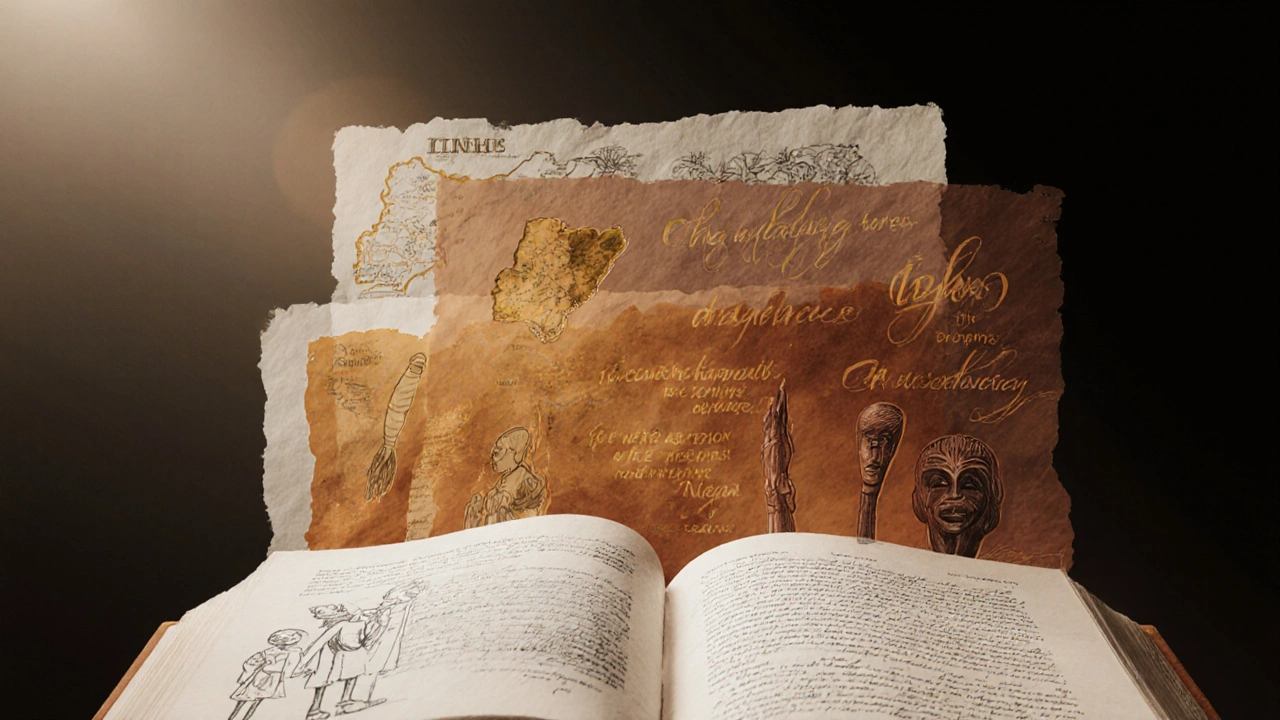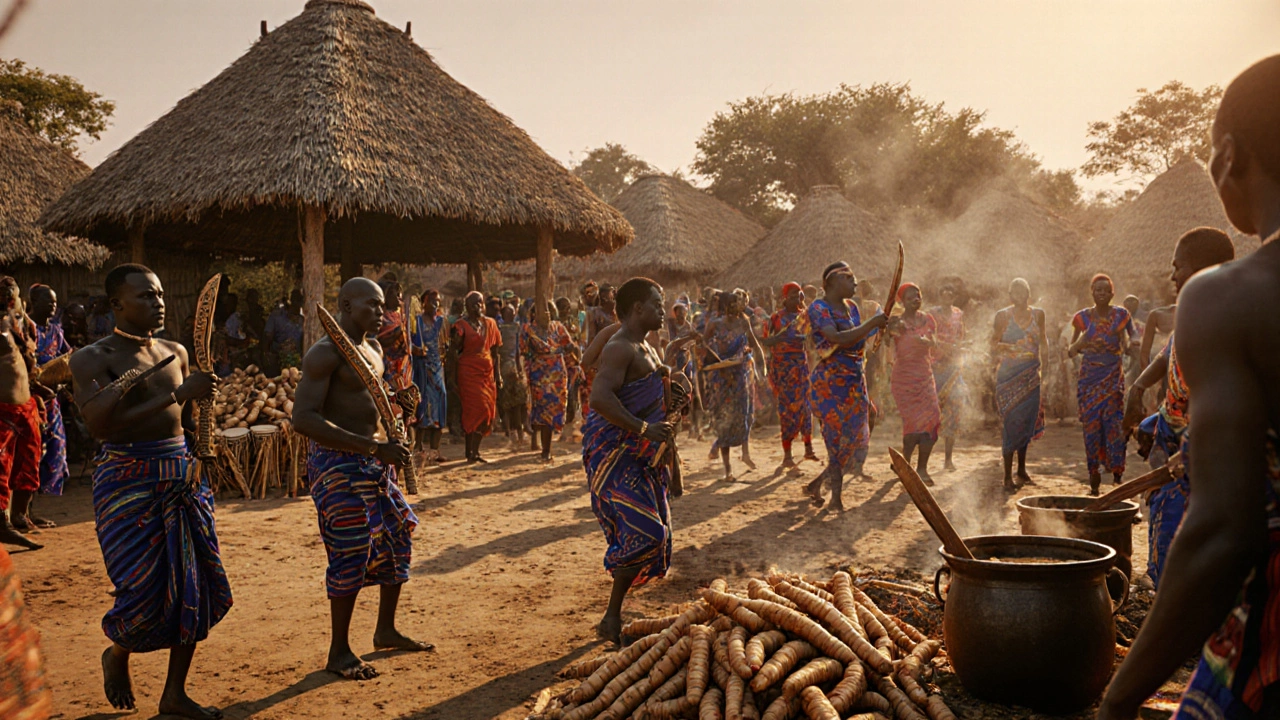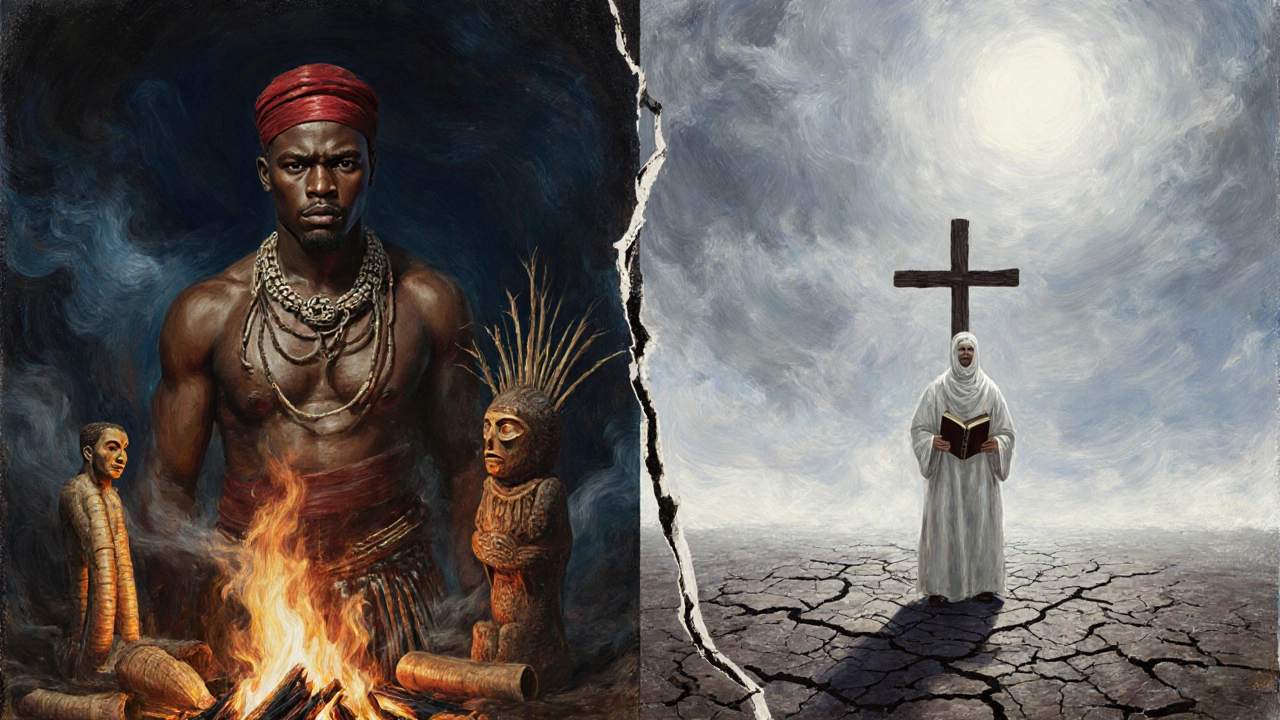Cultural Context in Stories: Real‑World Example Explained
 Oct, 2 2025
Oct, 2 2025
Cultural Context Explorer
Interactive Analysis Tool
Explore how cultural context shapes storytelling by examining key elements from Things Fall Apart. Enter your observations below to see how they connect to the novel's cultural framework.
Your Cultural Context Analysis
Historical Period
Pre-colonial Nigeria, just before British missionaries arrive. This setting influences Okonkwo’s resistance to change and his fear of being perceived as weak.
Societal Norms
Strong emphasis on masculinity, communal decision-making, and ancestral worship. These norms shape Okonkwo’s actions and define his internal conflict.
Language
Achebe blends English with Igbo proverbs, showing how language carries cultural weight and preserves traditional wisdom.
Setting
The fictional Umuofia reflects real Igbo village structures-matrilineal clans, yam festivals, and market days-rooting the story in authentic cultural practices.
Theme
Resistance to change. The novel explores how Okonkwo’s downfall is both personal and symbolic of a culture’s clash with colonial forces.
When you read a story a narrative that follows characters through events and ideas, the cultural context the social, historical, and linguistic environment that surrounds a narrative works like an invisible backdrop, coloring every choice the author makes.
Quick Take
- Cultural context includes history, customs, language, and values of a society.
- It shapes characters, plot twists, and the story’s themes.
- Identifying it helps you read deeper and appreciate author intent.
- Example: the Igbo customs in Things Fall Apart drive its conflict.
- Use a step‑by‑step checklist to spot cultural cues.
What is cultural context?
The phrase means more than just the time period a story is set in. It embraces the whole ecosystem in which the narrative was born: the historical period the era, political climate, and major events of the time, the prevailing societal norm shared customs, gender roles, and belief systems, the language spoken, and even the author’s own background. When you combine all these layers, you get a richer picture of why characters act the way they do and why certain plot points feel inevitable.
How cultural context shapes a story
Think of cultural context as the soil that nurtures a plant. If you change the soil, the plant’s growth pattern shifts. In a story, the soil includes:
- Setting: Not just geography, but the cultural atmosphere of that place.
- Character motivations: Influenced by local traditions, family expectations, and communal duties.
- Plot events: Often stem from cultural rituals, taboos, or historical conflicts.
- Theme: The big idea often reflects a society’s struggle-class, colonialism, gender, etc.
When a writer weaves these elements together, the story resonates with readers who recognize those cues, and it educates those who don’t.

Real‑world example: Things Fall Apart by Chinua Acheke (Author) Nigerian novelist who wrote in English to portray Igbo life
Published in 1958, the novel follows Okonkwo, a respected warrior in an Igbo village. The cultural context is vivid:
- Historical period: Pre‑colonial Nigeria just before British missionaries arrive.
- Societal norm: Strong emphasis on masculinity, communal decision‑making, and ancestral worship.
- Language: Achebe blends English with Igbo proverbs, showing how language carries cultural weight.
- Setting: The fictional Umuofia reflects real Igbo village structures-matrilineal clans, yam festivals, and market days.
Because readers understand these layers, Okonkwo’s downfall feels both personal and symbolic of a culture’s clash with colonial forces. The novel’s theme-resistance to change-only makes sense when you see how deeply the Igbo identity is tied to land, language, and ritual.
Step‑by‑step guide to spotting cultural context in any story
- Identify the setting time, place, and surrounding cultural atmosphere. Note dates, locations, and any explicit cultural references.
- Research the author their background, nationality, and era. An author's own culture often seeps into the narrative.
- Look for repeated customs, rituals, or sayings. Those are clues to underlying societal norm the collective values and expectations of the community.
- Pay attention to language-dialects, slang, or translated proverbs can signal cultural identity.
- Ask what the story’s theme the central message or moral says about that culture. Does it critique tradition or celebrate it?
- Cross‑check any historical events mentioned with reliable sources to see how they influence plot decisions.
- Summarize your findings in a short paragraph: “The story is set in X during Y, reflecting Z cultural norms, which shape character A’s choices and reinforce the theme of …”.
Common pitfalls when ignoring cultural context
- Misreading character motives as simply personal flaws rather than culturally driven pressures.
- Assuming universal values and missing subtle satire or criticism aimed at a specific group.
- Overlooking language nuances that carry symbolic weight.
- Projecting modern sensibilities onto historical settings, leading to anachronistic judgments.
Related concepts to explore
If you enjoyed digging into cultural context, you might also like:
- Intertextuality - how texts reference each other across cultures.
- Postcolonial literature - stories that examine the legacy of colonial rule.
- Symbolic geography - how locations become symbols of broader ideas.
- Reader‑response theory - how a reader’s own cultural background influences interpretation.

Frequently Asked Questions
Why does cultural context matter more than just the plot?
The plot tells what happens; cultural context explains why it happens. Without the background, motivations can feel flat, and themes lose their depth.
How can I research cultural context quickly for a short story?
Start with a Wikipedia glance at the time period and location, then look for a reputable article or book chapter on the society’s customs. Note any unique terms the author uses.
Can cultural context change over multiple editions of the same book?
Yes. New introductions, footnotes, or forewords often add historical clarifications, especially for classics that are re‑issued for modern audiences.
What’s the difference between cultural context and setting?
Setting is the physical place and time; cultural context is the web of beliefs, customs, and historical forces that animate that place.
How do I discuss cultural context in a book report without sounding academic?
Mention one or two concrete details-like a local festival or a proverb-and explain how they affect a character’s decision. Keep it short and tie it to the story’s main conflict.